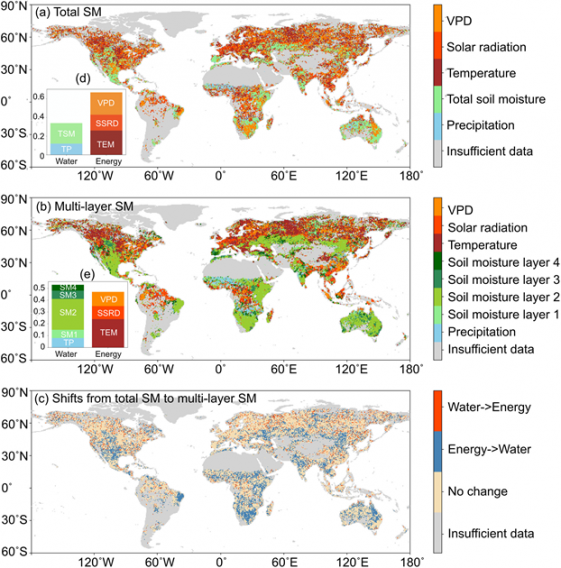How does taking into account vertical variability of Soil Moisture impact on predicting vegetation productivity? Does this impact depend on climatic areas and vegetation types?
These are the main questions addressed by a recently published paper, outcome of Living Planet Fellow Sophia Walther research.
The study demonstrates how, at the global scale, semi-arid areas and vegetation types such as grasses and shrubs are controlled by comparatively deep soil layers moisture as they have deep rooting systems. A complexity not yet acknowledged by global vegetation models which apply constant soil depths.
Besides that, hydrometeorological controls – water (total soil moisture, precipitation) vs energy (solar radiation, temperature, vapour pressure deficit) – of vegetation productivity are compared by means of various proxy metrics, namely SIF (sun-induced fluorescence), NDVI (normalised difference vegetation index) and NIRv (near-infrared reflectance of terrestrial vegetation).

Proxy metrics are derived from GOME-2 and MODIS long-track records, while energy and water-related variables are from the ERA5 reanalysis.
, , , , , & (2021). Revisiting global vegetation controls using multi-layer soil moisture. Geophysical Research Letters, 48, e2021GL092856. https://doi.org/10.1029/2021GL092856
Featured image : Water droplets on vegetation. Credit: Guido Gloor Modjib

